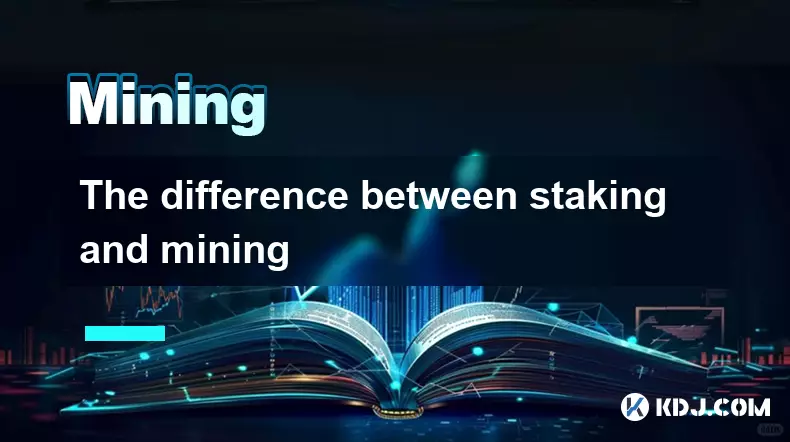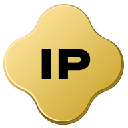-
 bitcoin
bitcoin $115692.075601 USD
5.13% -
 ethereum
ethereum $4162.931611 USD
11.68% -
 bnb
bnb $1310.063287 USD
17.56% -
 tether
tether $1.000983 USD
0.00% -
 xrp
xrp $2.534505 USD
8.16% -
 solana
solana $198.235737 USD
13.49% -
 usd-coin
usd-coin $1.000236 USD
0.02% -
 dogecoin
dogecoin $0.207352 USD
12.89% -
 tron
tron $0.323043 USD
3.62% -
 cardano
cardano $0.701559 USD
11.88% -
 hyperliquid
hyperliquid $39.924597 USD
8.30% -
 chainlink
chainlink $18.934457 USD
11.56% -
 ethena-usde
ethena-usde $1.000552 USD
0.02% -
 stellar
stellar $0.340575 USD
7.05% -
 bitcoin-cash
bitcoin-cash $545.011757 USD
8.86%
KAS mining hardware requirements
Kaspa (KAS) mining requires high-memory-bandwidth GPUs like the RTX 3060 Ti or RX 6700 XT, optimized settings, and low-latency networking for 1-second block efficiency.
Jul 25, 2025 at 04:35 pm

Understanding KAS Mining and Its Core Mechanism
KAS (Kaspa) is a high-throughput blockDAG (Directed Acyclic Graph) cryptocurrency that utilizes the GHOSTDAG protocol to achieve fast block times—currently mining blocks every 1 second. Unlike traditional blockchain systems that produce one block per interval, Kaspa's structure allows multiple blocks to be referenced and confirmed rapidly, making it unique in the crypto space. Because of this aggressive block interval, efficient and optimized mining hardware is essential to participate effectively. The consensus algorithm used by Kaspa is kHeavyHash, a memory-hard variant of the HeavyHash algorithm, which is specifically designed to resist ASIC centralization while still allowing efficient mining on consumer-grade GPUs and FPGAs.
The core principle behind kHeavyHash is to balance computational load with memory bandwidth, ensuring that mining remains accessible without being dominated by specialized hardware. However, due to the 1-second block time, miners must solve and propagate blocks extremely quickly. This places a premium on low-latency processing, high memory bandwidth, and stable hardware performance. Any delay in computation or submission can result in orphaned blocks and reduced profitability.
Minimum GPU Requirements for Efficient KAS Mining
To mine KAS effectively, the choice of GPU plays a critical role. While entry-level cards can technically participate, they are unlikely to yield profitable results due to low hashrates and high power consumption relative to output. The following GPUs are considered minimum viable options for serious mining:
- NVIDIA GeForce RTX 3060 Ti: Offers a hashrate of approximately 2.1 GH/s with optimized settings, making it one of the most cost-efficient options.
- NVIDIA RTX 3070: Delivers around 2.7 GH/s, with better power efficiency than lower-tier models.
- AMD Radeon RX 6700 XT: Achieves 2.4 GH/s under tuned conditions, though it consumes more power than NVIDIA equivalents.
- NVIDIA RTX 4070: Provides over 3.0 GH/s with excellent energy efficiency, ideal for long-term operations.
All these GPUs must have at least 8GB of VRAM, as kHeavyHash requires substantial memory bandwidth and temporary storage during hash calculations. VRAM bandwidth is more crucial than raw compute power, so cards with high memory throughput (e.g., GDDR6X) perform better. Additionally, driver stability and support for CUDA or OpenCL are mandatory, as mining software like kOre and GMiner rely on these frameworks.
System-Wide Hardware Considerations Beyond the GPU
While the GPU is the primary workhorse, other components significantly impact mining stability and efficiency. Power supply units (PSUs) must provide stable, continuous power with at least 80 Plus Gold certification. For a single GPU rig, a 650W PSU is sufficient. For multi-GPU setups, 1000W or higher is recommended, with modular cabling to reduce clutter and improve airflow.
The motherboard should support multiple PCIe slots and have robust power delivery. Mining-specific motherboards like the ASUS B250 MINING EXPERT or MSI B250 MINING PLUS allow up to 19 GPUs and feature reinforced PCIe slots. However, for a single or dual GPU setup, a standard ATX motherboard with PCIe 3.0 x16 support is adequate.
CPU requirements are minimal since the GPU handles the heavy lifting. A basic Intel Celeron or AMD Ryzen 3 is sufficient to manage system operations. However, for multi-GPU rigs, a quad-core processor with hyper-threading helps manage background tasks and mining software overhead.
RAM should be at least 8GB DDR4, though 16GB is preferred to prevent bottlenecks when running mining OSes like HiveOS or RaveOS. Storage needs are low—a 64GB SSD or USB drive is enough to run the operating system and mining software.
Optimizing GPU Settings for Maximum KAS Hashrate
Achieving optimal hashrate requires manual tuning of GPU parameters. Most mining software allows adjustment of core clock, memory clock, power limit, and voltage. Below are recommended settings for common GPUs using kOre miner:
RTX 3060 Ti:
- Core Clock: +100 MHz
- Memory Clock: +900 MHz
- Power Limit: 70%
- Resulting hashrate: ~2.1 GH/s
RTX 3070:
- Core Clock: +150 MHz
- Memory Clock: +1000 MHz
- Power Limit: 75%
- Resulting hashrate: ~2.7 GH/s
RX 6700 XT:
- Core Clock: -50 MHz
- Memory Clock: +1100 MHz
- Voltage: 950 mV
- Resulting hashrate: ~2.4 GH/s
These values must be tested incrementally to avoid system crashes or thermal throttling. Use tools like MSI Afterburner or AMD Software: Adrenalin Edition to apply changes. Monitor temperatures using HWInfo or GPU-Z, ensuring GPU junction temperature stays below 85°C. Excessive heat reduces lifespan and can cause instability.
Always perform stress tests for at least 30 minutes before deploying in a live mining environment. If artifacts appear on screen or the system reboots, reduce memory overclock or increase cooling.
Software and Network Requirements for Reliable Mining
Mining KAS requires compatible software and a low-latency internet connection. Recommended miners include:
- kOre Miner (officially supported, open-source)
- GMiner
- T-Rex Miner
Each must be configured with a wallet address, pool URL, and worker name. Example configuration for kOre:
kore -a kheavyhash -o stratum+tcp://pool.kaspa.org:4416 -u kaspa:your_wallet_address.worker1 -p xReplace your_wallet_address with a valid Kaspa wallet address generated from a supported wallet like Kaspa Wallet or Hotbit Wallet. The pool port 4416 is standard for SSL connections, reducing man-in-the-middle risks.
Network latency must be under 50ms to the chosen mining pool. High latency increases the chance of orphaned blocks. Use ping and traceroute to test connectivity. A wired Ethernet connection is mandatory—Wi-Fi is too unstable for 1-second block propagation.
Operating system choices include Windows 10/11, Linux, or specialized mining OSes. HiveOS is highly recommended for remote management, automatic restarts, and real-time monitoring across multiple rigs.
Frequently Asked Questions
Can I mine KAS with a CPU?No, CPU mining is not viable for KAS. The kHeavyHash algorithm is optimized for GPU memory bandwidth, and CPUs lack the parallel processing capability and VRAM required to achieve competitive hashrates. Even high-end desktop CPUs produce negligible output compared to entry-level GPUs.
Is there a risk of GPU damage from mining KAS?Continuous mining increases wear on GPUs, particularly due to thermal cycling and sustained load. However, with proper cooling, undervolting, and regular maintenance, modern GPUs can operate reliably for years. Avoid pushing memory clocks beyond stable limits and ensure adequate case ventilation.
Do I need a full node to mine KAS?No, mining does not require running a full node. Miners connect directly to a mining pool, which handles block validation and network communication. However, running a full node separately can improve network health and provide better transaction visibility.
How often are KAS blocks found and rewarded?A new block is generated every 1 second, and rewards are distributed based on the miner's share contribution to the pool. Pools typically use PPLNS (Pay Per Last N Shares) or FPPS (Full Pay Per Share) models. Rewards are credited periodically, usually every few hours, depending on pool settings.
Disclaimer:info@kdj.com
The information provided is not trading advice. kdj.com does not assume any responsibility for any investments made based on the information provided in this article. Cryptocurrencies are highly volatile and it is highly recommended that you invest with caution after thorough research!
If you believe that the content used on this website infringes your copyright, please contact us immediately (info@kdj.com) and we will delete it promptly.
- XRP Price Prediction: Weekend Rollercoaster or Rally?
- 2025-10-12 08:45:16
- Bittensor (TAO): Super Bullish Signals Point to Potential 2x Rally
- 2025-10-11 10:25:12
- Silver Price Correction: Navigating the Dip & Identifying Key SEO Keywords
- 2025-10-11 10:25:12
- Decoding Crypto Trends: Bittensor's Bull Run, Cardano's Dip, and LivLive's Presale Buzz in 'Uptober 2025'
- 2025-10-12 08:45:16
- MoonBull: The Crypto Meme Coin Promising 1000x Gains?
- 2025-10-11 10:30:01
- Crypto Payroll Revolution: Stablecoins, Altcoins, and the Future of Salary Payments
- 2025-10-11 10:30:01
Related knowledge

The difference between staking and mining
Sep 24,2025 at 05:18am
Understanding Staking in the Cryptocurrency Ecosystem1. Staking involves holding funds in a cryptocurrency wallet to support the operations of a block...

How to participate in testnet mining?
Sep 22,2025 at 09:18am
Understanding Testnet Mining in the Crypto Ecosystem1. Testnet mining is a method used by blockchain developers to simulate real-world conditions on a...

How to dispose of abandoned mining machines?
Sep 19,2025 at 08:19pm
Assessing the Condition of Abandoned Mining Rigs1. Begin by inspecting each mining machine for visible damage, corrosion, or missing components. Machi...

How to identify high-quality mining pools?
Sep 21,2025 at 03:19pm
Reputation and Track Record1. A mining pool’s reputation is built over time through consistent performance and transparency. Pools that have operated ...

Advantages of decentralized mining pools
Sep 20,2025 at 04:36pm
Enhanced Security and Resistance to Censorship1. Decentralized mining pools operate on blockchain-based smart contracts, eliminating the need for a ce...

What is mining machine overclocking?
Sep 21,2025 at 07:19pm
Understanding Mining Machine Overclocking1. Mining machine overclocking refers to the process of increasing the operating frequency of a cryptocurrenc...

The difference between staking and mining
Sep 24,2025 at 05:18am
Understanding Staking in the Cryptocurrency Ecosystem1. Staking involves holding funds in a cryptocurrency wallet to support the operations of a block...

How to participate in testnet mining?
Sep 22,2025 at 09:18am
Understanding Testnet Mining in the Crypto Ecosystem1. Testnet mining is a method used by blockchain developers to simulate real-world conditions on a...

How to dispose of abandoned mining machines?
Sep 19,2025 at 08:19pm
Assessing the Condition of Abandoned Mining Rigs1. Begin by inspecting each mining machine for visible damage, corrosion, or missing components. Machi...

How to identify high-quality mining pools?
Sep 21,2025 at 03:19pm
Reputation and Track Record1. A mining pool’s reputation is built over time through consistent performance and transparency. Pools that have operated ...

Advantages of decentralized mining pools
Sep 20,2025 at 04:36pm
Enhanced Security and Resistance to Censorship1. Decentralized mining pools operate on blockchain-based smart contracts, eliminating the need for a ce...

What is mining machine overclocking?
Sep 21,2025 at 07:19pm
Understanding Mining Machine Overclocking1. Mining machine overclocking refers to the process of increasing the operating frequency of a cryptocurrenc...
See all articles










































































